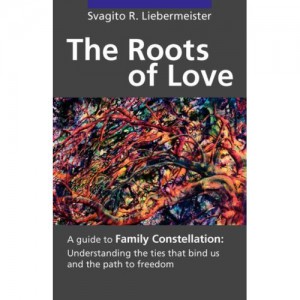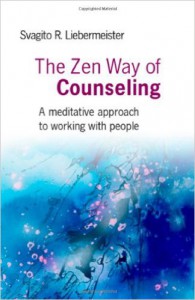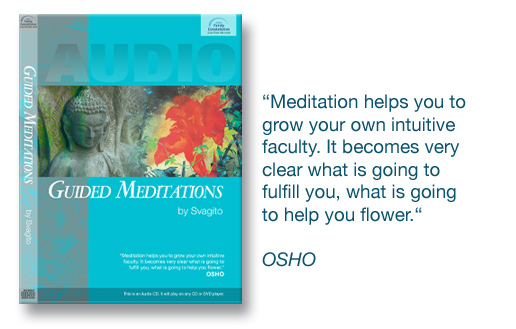To buy your copy you can order the book directly from the author by sending an email to:
svagito@family-constellation.net – or online from www.amazon.com
THE ROOTS OF LOVE
A Guide to Family Constellation:
Understanding the ties that bind us
and the of path to freedom
by Svagito
is now available in various languages!
This book examines the roots of love in families, in the relationship between parents and children and in the relationship between men and women. It explains the laws that guide our behavior within these relationships, what leads us into suffering and what can lead us out of it; how to grow from a blind to a more conscious love.
The author has been a course and training leader in the field of therapy and meditation since 1981 and has personally studied with Bert Hellinger. He teaches and conducts trainings in more than 15 countries around the world and has an in-depth background working with different cultures and family histories.
Hellinger’s original insights are illuminated by the author’s own experience and are placed in the broader context of meditation and spiritual growth. This is more than a book about therapy; it is a stepping stone to finding one’s own authenticity and individual nature.
The book is designed both for newcomers wishing to understand the basic concepts of Family Constellation and as a practical guide for those seeking to actively work with this approach.
When we examine what goes on between a parent and child, we immediately see an imbalance: the child is dependent on the adult, the mother or father gives more, and the child takes more. When we look at the relationship between couples, we see a balance, a reciprocation of giving and taking in which both partners play the roles of giver and receiver in roughly equal amounts.
In essence, a man is receiving from the woman what he is missing, and giving to the woman what she is missing; a woman is receiving from the man what she is missing and giving to him what he is missing — both must be ready to exchange in a balanced way. They must be ready to show that they need something from the other.
This exchange of giving and receiving happens at all levels – material, sexual, emotional, mental, spiritual — and is the sustaining force that maintains the relationship, deepening the commitment of both partners. The more they give and receive from each other, the stronger the bond will be between them.
In the parent-child relationship, bonding is already a built-in factor; a child is biologically bonded to his parents, whether he likes it or not. In the relationship between man and woman there is a choice to come together, but as soon as they create a bond through their exchange, separating becomes difficult. This is one reason why people often feel afraid to give or receive too much, because they fear they will lose their freedom to do what they want.
In the parent-child relationship the sentences we use to express the intrinsic dynamics are, “You are big and I am small, you give, I receive.” In a man-woman relationship it is more appropriate to say to each other, “I have something that you need, and I’m ready to give it to you; also, you have something that I need and I am ready to receive it from you.”
Where Problems Start
Partners bring into the relationship whatever burdens they carry from their family of origin, so it is clear that the parent-child relationship will have a strong impact on the man-woman relationship. If a person wants to ‘give’ to his parents, a situation which, as we have seen, is an entanglement that goes against the natural hierarchy and order of a family system, then he may want to compensate by receiving from his partner, as if the partner is his parent. In this way, everything is turned upside down.
What would need to happen to remedy the situation and restore balance is that he would have to “shrink” and become ‘smaller’ in relation to his parents — becoming a child rather than playing parent — and in relation to his partner he would need to grow ‘bigger,’ learning to take responsibility and giving more.
When one partner unconsciously asks the other to be a parent, or adopts a parental role, the balance between two equals is disturbed, upsetting the equilibrium of the relationship. What is required of a man and woman who come together in a partnership is that they ask something from the other, and are at the same time aware of what they owe to the other. The challenge is to take a position in the relationship where both partners give only as much as the other is willing or able to give back, or receive only as much as the other is ready to receive in return.
From Part Four:
In meditation, people don’t try to change or fix anything, but rather become aware of their inner being, their witnessing state of consciousness. The moment this happens, all fight and struggle ceases. Hence, many mystics have taught relaxation and effortlessness as a path to experiencing self-nature.
In Family Constellation, people are looking at how they are related to their own families, learning to accept and embrace these roots, and in this way coming into contact with a universal life force that moves us all. When people feel grateful to their parents, in the same moment they experience a wider feeling of self-acceptance, falling in tune with the whole of life.
By seeing and understanding the ways they are tied to their families, people also understand why they behave in a certain way. When they accept that this is how they are, something else shines through, something of the inner being, soul, or essence, which is eternal and not part of the superficial layers of human personality.
Really, it is a spiritual quality that comes through in such moments. Imagine, for a moment, a disabled or handicapped person, who is unable to perform and experience many things in life that ordinary people do. Most “normal” people would look at this person with the attitude that he has a disadvantage and, indeed, he may feel this way himself. But if he is able to fully agree with his fate, and fall in tune with it, he is likely to develop a certain strength and well-being that others will not have.
In a way, our objections or disagreements to life function like a handicap. We may think, for example, that it would have been better if our childhood was different, or if our parents had behaved differently, or if we had behaved differently in our relationships – the opportunities for regret when reviewing our personal life history are endless. But in doing this we are in fact taking away something from ourselves, because the reality of events will not change; all we are doing is denying ourselves the positive experiences that arise out of accepting ourselves and our past.

OSHO THERAPY
21 well-known therapists describe how their work has been inspired by an enlightened mystic.
This book is about therapy that is connected to meditation, inspired by the enlightened mystic Osho and his vision of life. For this reason, it is referred to as ‘Osho Therapy’. In this context, therapy is not just a method to solve personal problems, but also prepares and leads a person towards meditation.
– compiled by Svagito
– various languages

THE ZEN WAY OF COUNSELING
This book on therapy and meditation and is available through Amazon.com, O-Books or the author himself.
This book presents a way of counseling that is rooted in meditation. It examines the core aspects of a spiritual approach to therapy, beyond method and technique, focusing on the essentials of how personal growth and transformation occur.
Important insights are offered to those who are interested in combining therapy and meditation, and who want to gain personal clarity and a new vision of how they work with people.
The principles described in this book can be applied to any form of therapy or counseling. Practical examples are given from the author’s own experience spanning more than 25 years as a therapist, a wide range of clients and many different countries.
core aspects of a spiritual approach to therapy, beyond method and technique,
focusing on the essentials of how personal growth and transformation occur.
The principles described in this book can be applied to any form of therapy or
counseling.
Important insights are offered to those who are interested in combining therapy and
meditation, and who wish to gain personal clarity and a new vision of how to work
with people.
This includes a general understanding of how the human mind functions, as well as
the dynamics of man-woman relationships and the polarity within each individual of
‘inner male’ and ‘inner female.’
Practical examples are given from the author’s own experience spanning more than 25
years as a therapist, including a wide range of clients and many different countries.
Three major techniques of therapy are compared and evaluated: body-oriented,
systemic and energy work.

GUIDED MEDITATIONS – Audio CD
This CD contains a collection of four short guided meditations. These meditations can be done at home or any other place, where one can remain undisturbed for at least 15-20 minutes. Each meditation centers around a certain topic and can be practised independantly of the other ones.


